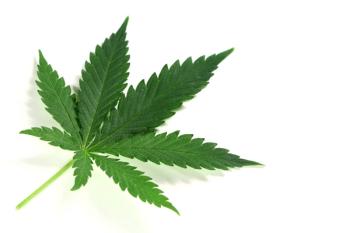
Cannabis Science and Technology
- July/August 2021
- Volume 4
- Issue 6
The Separation of Several Minor Cannabinoids via Chiral HPLC
This technical piece is focused on the separation of the individual enantiomers of each compound mentioned above, as well as the combined separation of the compounds from each other for a fast, reliable quantification.
The continuously changing landscape of the legality of cannabis and cannabis-related products in the US places a huge burden on manufacturers and suppliers to ensure they are meeting the regulatory standards of their states and localities. Testing agencies are similarly tasked with ensuring these products meet the regulatory requirements, and contain the reported potency levels of the indicated cannabinoids. Because many of the cannabinoids are chemically and structurally related, distinguishing the legal and illegal cannabinoids from each other can be challenging with current analysis methods. Several of these compounds, Δ6-tetrahydrocannabinol (THC), Δ10-THC, cannabichromene (CBC), and cannabicyclol (CBL) are a few examples. While CBL and CBC are not scheduled under the Controlled Substances Act, a gray area exists for the various THC isomers, with most being considered illegal. Therefore, accurate identification is of utmost importance for ensuring fully compliant products. This technical piece is focused on the separation of the individual enantiomers of each compound mentioned above, as well as the combined separation of the compounds from each other for a fast, reliable quantification.
Because of the previously restricted access to performing comprehensive cannabinoid studies, and with the growing consumption offers coming from the cannabis industry (vape, edibles, and so forth), the science associated with potency testing and ingredient composition has been reactionary at times. Researchers are identifying additional minor cannabinoids on a regular basis (1), and attempting to ascertain the response they elicit biologically. To this end, even compounds that were reported in the literature decades ago, still have not been fully studied and assessed for their physiological activity and bioavailability.
Several of those compounds are included in this high performance liquid chromatography (HPLC) application development report, which includes include Δ6- and Δ10-tetrahydrocannabinol (THC) (Figures 1 and 2, respectively) and cannabicyclol (CBL) (Figure 3). Δ6- and Δ10-THC are structural isomers of the more widely popular Δ8- and Δ9-THC, the difference arising from the location of a double bond on the upper methyl-cyclohexene ring. This methyl group on the cyclohexene ring gives rise to a chiral center, and thus a pair of enantiomers, in all isomers of THC, including Δ6 and Δ10, which cannot be distinguished by typical achiral separation conditions. While not much is known with certainty regarding these THC isomers, the chemical processing of cannabis seems to give rise to higher-than-typical levels of these compounds. In 1966 and 1967, Fahrenholtz and colleagues demonstrated the conversion of Δ8 to Δ9-THC via basic dehydrohalogenation (1). In 1984, Srebnik and colleagues built upon this initial work and demonstrated the formation of Δ6 and Δ10 under similarly basic conditions (2), which was later supported by Hanuš and colleagues (3). Hanuš and colleagues further posit an alternative oxidative aromatization of Δ9-THC pathway to the formation of Δ6-THC, again a possible consequence of cannabis processing. More recently, Δ10-THC was identified from California-grown cannabis biomass contaminated by fire retardants (4). Because there are so many structurally related cannabinoids produced naturally and synthetically during production, the actual identities and quantities are often combined with other unidentified phytocannabinoid and terpene distillates. Being able to identify these two positional isomers of THC is therefore of importance. A recent application note began to explore the separations of these molecules; this work continues to build upon that (5).
CBL, while a naturally occurring cannabinoid, is typically not found in very high levels in newly harvested sources. One pathway for its formation is via the ultraviolet (UV)-promoted decay of cannabichromene (CBC) (6), so storage of cannabis typically results in higher levels of CBL over time (Figure 4). Another is the conversion of cannabichromene acid (CBCA) to cannabicyclolic acid (CBLA), followed by the decarboxylation to CBL (7). While CBL is not a newly documented cannabinoid, its health benefits or detriments have not been fully studied, and quantifying its levels in a product could help judge the relative age and composition of the product.
Experimental
Experiments were performed using an Agilent 1200, equipped with a diode array-ultraviolet (DAD-UV) detector and quaternary mixing pump. Cannabinoid samples were provided by Cayman Chemical as solutions of 1 mg/mL in acetonitrile, and used as is without further dilution. All solvents used were HPLC grade or higher, and used as is. Specifically, the hexane used contained 95% n-hexane; the ethanol was reagent alcohol (denatured), which contains 90% ethanol, 5% methanol, and 5% isopropanol. See Tables I–III for more details.
Results and Discussion
The Separation of Δ6- and Δ10-THC
Because the pairs of cannabinoids are diastereomeric with each other, it was not a surprise to find a resolution from each other, that is, Δ6-THC resolved well from Δ10-THC. The ultimate test was finding proper conditions for the separation of all four isomers of the mixtures (a diastereomer pair and an enantiomer pair), while avoiding any coelution. CHIRALPAK IG and CHIRALPAK IB N excelled in this regard, providing baseline resolutions for the mixture.
CHIRALPAK IB N-3, utilizing a normal phase mobile phase consistent of 90:10 hexane-isopropanol (Hex-IPA), provided baseline resolution for the four isomers, which include (6aR,9S)-Δ10-THC, (6aR,9R)-Δ10-THC, 9(S)-Δ6a,10a-THC, and 9(R)-Δ6a,10a-THC (Figure 5). The elution order in this case is such that 9(R)-Δ6a,10a-THC is first, (6aR,9R)-Δ10-THC is second, 9(S)-Δ6a,10a-THC is third, and (6aR,9S)-Δ10-THC is fourth. While hexane-ethanol (Hex-EtOH) did provide good resolution of the individual enantiomer pairs, there was partial coelution of two diastereomers, so for this method information was excluded for this application.
CHIRALPAK IG-3, utilizing both normal phase combinations of 95:5 Hex-EtOH and 90:10 Hex-IPA, provided baseline resolutions for all four isomers as well. When compared to CHIRALPAK IB N-3, there was a difference in elution order observed, where the isomers of Δ6-THC elute first and Δ10 elute second. The elution order therefore stands as 9(R)-Δ6a,10a-THC first, 9(S)-Δ6a,10a-THC second, (6aR,9R)-Δ10-THC third, and (6aR,9S)-Δ10-THC fourth. This was the case for both mobile phase combinations (Figures 7 and 8, click on images to enlarge).
The Separation of Cannabicyclol
Although the Δ6- and Δ10-THC enantiomers were well resolved on IB N-3 and IG-3, the investigation for the separation of (+/-) cannabicyclol was expanded to include CHIRALPAK IA-3 and IC-3, which compose the core screening set of immobilized columns offered by Daicel.
As shown in Figures 9 and 10 (click to enlarge) the enantiomers of cannabicyclol are well resolved on all four columns, however there is a pronounced, and unexpected dependency of the peak shape based on mobile phase and column combination. Because the interactions that take place on column are complex and difficult to predict, it is not entirely known why this is observed, however hydrogen-bonding interactions between the analyte and chiral stationary phase could be a possible explanation. Notably, CHIRALPAK IG and IA yielded very good peak shape (symmetrical with minimal tailing) under Hex-EtOH conditions, whereas Hex-IPA resulted in a significant retention of peak 2, in addition to a considerable deterioration of peak shape. This finding provides for great flexibility in the analysis of this compound.
The Separation of Cannabicyclol from Cannabichromene
As previously stated, cannabicyclol is not a naturally occurring cannabinoid in that it forms from the UV photocyclization of cannabichromene or CBCA. Therefore, the separation of these compounds from each other could assist in distinguishing or verifying new versus aged cannabis products.
Based on the selectivity and peak shape of the separation of cannabicyclol, CHIRALPAK IB N-3 was chosen to explore this separation. Cannabicyclol and cannabichromene were mixed and run under 90:10 Hex-IPA and Hex-EtOH conditions, resulting in minimal separation of the cannabichromene enantiomers, although baseline resolution from the enantiomers of cannabicyclol. Optimization was performed between the ranges of 99:1 to 95:5 for both Hex-IPA and Hex-EtOH conditions, with a screen of temperature ranges from 15 °C to 35 °C to see what, if any, improvements could be achieved.
Figures 11 and 12 (click to enlarge) show an overlay of selected conditions of 95:5 Hex-EtOH and 95:5 Hex-IPA, respectively, at temperature points 15 °C, 20 °C, 25 °C, 30 °C, and 35 °C. Although temperature did not appear to have a significant effect on the separation under Hex-EtOH conditions, an increase in temperature appears to be a suitable way to assist in the peak shape improvement of the later eluting second peak from cannabicyclol. This could be valuable for improving sensitivity and accurate quantification as a result of the decreased peak tailing, and therefore the reduction of possible coelution with other sample components.
Not surprisingly, there was a significant impact on the separation when looking from 99:1 to 95:5 Hex-alcohol mixtures. Figures 13 and 14 (click to enlarge) show the separations at 35 °C under these varying mobile phase combinations. There appears to be a critical threshold between 3–4% alcohol where, once passed, the separation deteriorates and is unrecognizable. Working within this constraint, the conditions of 96:4 and 95:5 Hex-IPA, and 97:3 and 96:4 Hex-EtOH were chosen for final optimization. Under these conditions, baseline separation and acceptable peak shape were achieved. Elution order is shown in Figures 15 and 16 (click to enlarge).
The Separation of Δ6- and Δ10-THC from Cannabicyclol
The addition of CBL to the mixture containing the four isomers of Δ6- and Δ10-THC produced some coelution for the CHIRALPAK IB N-3 method, as well as the Hex-IPA 90:10 method on CHIRALPAK IG-3. Therefore, for the purposes of this experiment, those conditions have been excluded. The Hex-EtOH 95:5 method on CHIRALPAK IG-3, however, produced baseline resolution of all six peaks without any additional optimization required (Figure 6). As the standards for the individual (+) and (-) cannabicyclol enantiomers are not currently available, elution order could not be determined at the time of this publication, however one enantiomer elutes between the two peaks from Δ6-THC, and the second elutes after the final peak from Δ10-THC.
Conclusions
The separation of Δ6- and Δ10-THC from each other, the separation of the individual enantiomer pairs of each Δ6- and Δ10-THC, as well as the separation of the enantiomers of CBL from each other, and from the enantiomers of CBC, has been demonstrated. These new analytical methods could serve to assist in the determination of several important parameters of commercially available cannabis products including content, age, and source or processing conditions. Several methods with different columns and mobile phases give users the flexibility to adapt them to the specific applications they are facing, and room for additional optimization if needed.
Disclaimer
As a responsible provider of quality products and services, Daicel Chiral Technologies makes available analytical techniques that may be of use to a broad range of customers and applications. It does not however support or promote the use of its products or services in connection with any contraband activities or products related to cannabis, including but not limited to illegal or illicit drug manufacturing, testing, or consumption.
Acknowledgments
The author of this application would like to acknowledge the generous donation of the cannabinoid standards from Cayman Chemical for the completion of this work. The list of standards consists of: (6aR,9S)-Δ10 THC (catalog number 25707); (6aR,9R)-Δ10 THC (catalog number 25708); 9(S)-Δ6a,10a THC (catalog number 26529); 9(R)-Δ6a,10a THC (catalog number 26528); (+/-) Cannabicyclol (catalog number 22036); and (+/-) Cannabichromene (catalog number ISO60163).
References
- K.E. Fahrenholtz, M. Lurie, and R.W. Kierstead, J. Amer. Chem. Soc. 88, 2079; 1967, 89, 5934 (1966).
- M. Srebnik, N. Lander, A. Breuer, and R. Mechoulam, J. Chem. Soc. Perkin Trans. 4/450, 2881-2886 (1984).
- L.O. Hanuš, S.M. Meyer, E. Muñoz, E., et al., Nat. Prod. Rep. 33(12), 1357-1392 (2016).
https://www.botanyfarms.com/blog/what-is-delta-10-thc/ .- J.B. Williams, K.B. Calati, K.W. Hering, R.E. Franckowski, and D.M. Iula, Application Note, "HPLC Method to Differentiate Four THC Stereoisomers: (6aR,9R)-Δ10-THC, (6aR,9S)-Δ10-THC, 9(R)-Δ6a,10a-THC, and 9(S)-Δ6a,10a-THC." Caymen Chemical Co., April 2021.
- J. Dach, E.A. Moore, and J. Kander, Cannabis Extracts in Medicine 78 (2015).
https://www.cannaconnection.com/blog/19241-how-are-cannabinoids-made .
About the Author
WESTON J. UMSTEAD, PHD, is the Technology and Business Development Manager at Chiral Technologies, Inc., in West Chester, PA. Direct correspondence to:
How to Cite this Article
W. J. Umstead, Cannabis Science and Technology 4(6), 44-51 (2021).
Articles in this issue
over 4 years ago
Cannabis is Medicine… Formulate it Like Medicine!over 4 years ago
Looking with Light: Understanding SpectrometryNewsletter
Unlock the latest breakthroughs in cannabis science—subscribe now to get expert insights, research, and industry updates delivered to your inbox.




